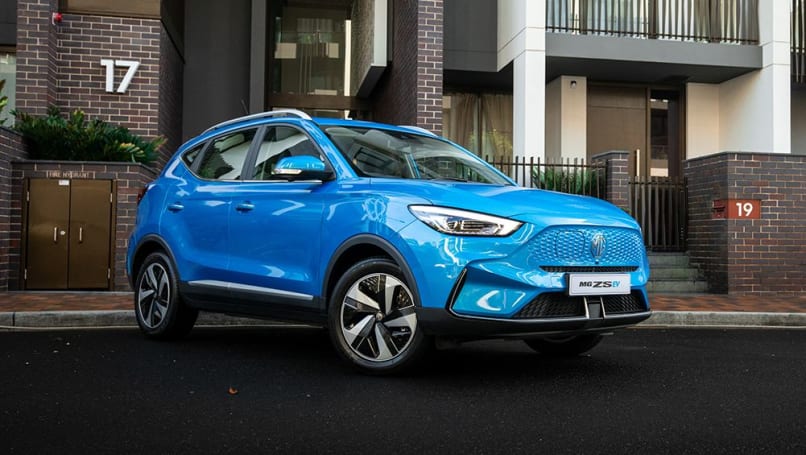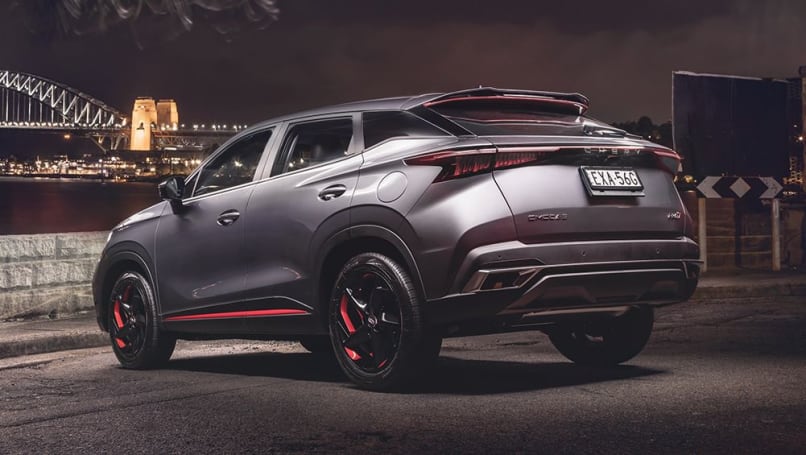
Holden class action! Holden Commodore, Colorado, Trailblazer, Caprice and more swept up in alleged faulty automatic transmission saga
Law firm Maurice Blackburn has launched a class action lawsuit against General...
Browse over 9,000 car reviews

To say Australians have embraced Chinese cars is an understatement. In recent years we have bought cars from China in increasingly huge numbers.
In 2022 China was the fourth-largest source of cars sold in Australia - behind Japan, Thailand and South Korea - with more than 122,000 examples sold. But five years ago, back in 2017, Chinese-made cars didn’t even feature in the top 15 in sales. In fact, we bought less than 5000 Chinese-made cars in 2017, which was less than vehicles made in Finland that year.
While China is always a sensitive topic - especially in the comments section - the reality is the Australian new-car buying public have embraced Chinese cars like never before. While non-Chinese brands such as Tesla and Polestar do make vehicles in China, which are included in the sales data for ‘22, the majority of the ones sold here are via Chinese brands. These include MG, GWM (Great Wall Motors), LDV and BYD, which are all rapidly growing in this country.
MG is a great example of how the Chinese car industry has been able to make great strides in foreign markets, especially Australia. MG isn’t a British brand anymore and is in fact part of the state-owned SAIC Motor Corporation (formerly known as the Shanghai Automotive Industry Corporation). But for many buyers, it’s an established brand with a history and heritage, even if the cars it now makes have nothing in common with what MG used to build.
Although, as Haval/GWM, LDV and BYD are demonstrating, it doesn’t really matter if the brand is established or all-new, Chinese cars have mass appeal in Australia for a variety of reasons.
To be blunt, one of the reasons these Chinese brands are doing so well in Australia is price. These relative newcomers are able to take advantage of lower production costs and the decision for previously value-led brands such as Mazda, Hyundai and Ford to move to a more premium pricing strategy.
Take, for example, the popular small SUV segment and the price comparison between the Chinese brands and the other big brands. The entry-level MG ZS SUV is priced from $22,990 driveaway while the Toyota Corolla Cross range starts at $33,000 plus on-road costs. That's obviously just one example, but across the board Chinese brand cars tend to have a price advantage over their competition.

But for all the sudden popularity there is a harsh reality to Chinese cars that is being overlooked by many - they’re simply not as good as their Japanese, Thai and South Korean rivals in terms of quality and vehicle dynamics.
To be blunt - you get what you pay for.
I recently spent time behind the wheel of the Haval Jolion S and it highlights all that is good about modern Chinese cars as well as all the work that still needs to be done to bring them up to par against what Toyota, Hyundai, Kia, etc offer.

From a design and presentation point-of-view the Jolion S is a fine car. It’s spacious for a ‘small SUV’ and the fundamental design and presentation is good. When you look at the detail, though, the cracks start to appear. Like the decision to put all the key functions for the air-conditioning on a digital touchscreen instead of a physical button. Or the Driver Monitoring System that seems great in theory but in practice is so poorly programmed it’s effectively useless or actually a distraction from driving.
Then there’s the driving experience, with the Jolion S simply feeling unfinished in terms of the way the engine surges, the gearbox lags and the suspension thumps. But it costs $36,990 driveaway and that will be enough for many people to forgive its flaws and accept it for what it is.
Chery is another Chinese brand that has recently made its return to the Australian market after trying and failing to make a go of it earlier this decade. Between 2011 and 2015 Chery tried to sell cars here that were, to be frank, terrible. They were very cheap but poorly designed, poorly built and terrible to drive - and, it turned out, built with asbestos.

Fast forward to 2023 and the new Chery Omoda 5 is a much better looking and asbestos-free offering. While it may not be perfect, with criticism around build quality and driving dynamics, there’s no questioning the giant leap forward Chery has made in less than a decade. The Omoda 5 looks like it’s from an entirely different company from the Chery models offered in Australia previously, which shows that Chinese brands can not only learn and adapt, but can do so in a very short space of time.
While there’s unquestionably a way to go before Chinese cars can compete with the likes of Toyota, Mazda, Hyundai and co. on quality and driving manners, such rapid progress means it probably won’t take as long as we think for that to happen.
The latest new-car sales data for the first three months of 2023, which was released earlier this week, shows MG firmly entrenched in the top 10 brands in the country and GWM/Haval is closing in. If the likes of LDV and BYD continue to grow at the current rate, there’s no reason to think there could be three or more Chinese brands amongst the country’s best sellers in the next five years.
Comments